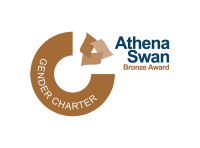

The project focuses on the models of circulation of raw materials during the Iberian Late Prehistory, as well as the use and social value given to the different materials, with special attention to metals and amber. During Late Prehistory a number of new materials come into play, from organic resources (ivory, ostrich eggshell or amber) to a myriad of abiotic raw materials (obsidian, green stones, rock crystal, cinnabar or metals). However, not all of these resources had the same social significance, and they circulated following different models. Their social value, which goes beyond their material properties, depended on several interrelated factors which varied spatially and temporally.
In these processes of valorisation and differential use of materials, circulation and exchange networks played a significant role. In this sense, advances in provenance archeometric techniques along with spatial analyses of movement routes are contributing significantly to our understanding of prehistoric exchange networks and how they contributed to social change.
This project sets out to test the following starting hypotheses:
H1. Exotic raw materials and metals followed different patterns of distribution and consumption.
H2. Patterns observed during the Copper Age are reversed in the Bronze Age.
H3. The consumption patterns for gold are different from those of other metals, and more similar to those of exotic raw materials.
H4. There are regional differences in the exchange networks and the uses given to raw materials that may imply the materialisation of diverse regional cultural identities.
We will focus on the study of diachronic changes in the distribution and consumption of raw materials with special attention to amber and metals. The research will employ a range of analytical techniques such as FTIR and ICPMS, in addition to obtaining new AMS dates.
We hope this project will contribute to address two key questions:
- How exchange networks and technical innovations affect social changes and vice versa; and
- How societies use and value raw materials differently, both regionally and diachronically, in the materialisation of their different ideologies and identities.
This project, led by Mercedes Murillo-Barroso at the Universidad de Granada, has received funding from the Spanish Ministry of Economy, Industry and Competitiveness, and the European Regional Development Fund (ERDF, EU).
Team members
Mercedes Murillo Barroso (Universidad de Granada)
Ignacio Montero Ruiz (CSIC)
Marcos Martinón-Torres (University of Cambridge)
Neil Wilkin, Aude Mongiatti, Duncan Hook (British Museum)
Arturo Ruiz Taboada (Universidad Complutense de Madrid)
Mike Charlton (University College London)
Enrique Penalver (IGME)
Alberto Dorado Alejos, Rafael Martinez Sanchez (Universidad de Granada)
Jose Ignacio Gil (Universidad del Pais Vasco)
Dimas Martin Socas (Universidad de La Laguna)
Sarjit Kaur, Edith Stout (Amber Research Laboratory, Vassar College)
Key publications
Murillo-Barroso, M., Montero Ruiz, I., Nieto, J. M., Camalich Massieu, M. D., Martin Socas, D., & Martinón-Torres, M. (2019). Trace elements and lead isotopic composition of copper deposits from the eastern part of the Internal Zone of the Betic Cordillera (SE Iberia): application to provenance of archaeological materials. Journal of Iberian Geology.
Murillo-Barroso, M., Penalver, E., Bueno, P., Barroso, R., de Balbin, R., & Martinón-Torres, M. (2018). Amber in prehistoric Iberia: new data and a review. Plos One 13(8): e0202235.
Murillo Barroso, M., Martinón-Torres, M., Camalich Massieu, M.D., Martin Socas, D., & Molina Gonzalez, F. (2017). Early metallurgy in SE Iberia. The workshop of Las Pilas (Mojacar, Almeria, Spain). Archaeological and Anthropological Sciences 9, 1539–1569.
Murillo-Barroso, M., & Martinón-Torres, M. (2012). Amber trade and value in the Prehistory of the Iberian Peninsula. European Journal of Archaeology 15(2), 187-216.
Funder
Spanish Ministry of Economy, Industry and Competitiveness
The European Regional Development Fund (ERDF, EU).


